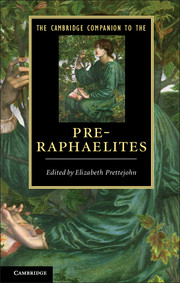3 - Pre-Raphaelite drawing
from PART ONE - PRE-RAPHAELITISM
Published online by Cambridge University Press: 28 September 2012
Summary
Paintings exhibited by members of the Pre-Raphaelite Brotherhood were criticized often for what was perceived as their badly drawn figures and faulty perspective as much as for their jarring colours and morbid subjects. The underlying drawing was perceived to be as much of a problem as the more painterly elements in their pictures. The awkward drawing of the human figures was viewed as wilful; it transgressed the sound and well-established academic conventions derived from the practices of the old masters. One example, from the Quarterly Review – representative of a mass of such criticism – will serve to illustrate this point:
Whilst endeavouring to labour in the spirit of the old masters, the Pre-Raphaelites appear to have fallen into the grave error of believing that the correct drawing of the human frame is not essential, because it is not to be found in the works of the painters of the fourteenth century. Indeed they seem to think, and would lead the public to think, that its absence forms one of the claims of the old masters to our admiration, as if the fame of Chaucer was to be attributed to the quaintness of his spelling.
Pre-Raphaelite drawing and academic convention
Knowledge of ߢcorrect drawingߣ was acquired through the process of copying ancient sculptures using laborious hatching, stippling and rubbing techniques. The emphasis at the Royal Academy Schools was upon the acquisition of drawing skills. Students worked towards perfecting their understanding of anatomy, proportion, beauty and ߢthe Idealߣ through drawing. There was virtually no formal training in painting, its methods or materials. We might usefully contrast the experience of Ford Madox Brown who had undergone a thorough academic grounding in Belgium before studying in Paris.
- Type
- Chapter
- Information
- The Cambridge Companion to the Pre-Raphaelites , pp. 47 - 61Publisher: Cambridge University PressPrint publication year: 2012
- 3
- Cited by



